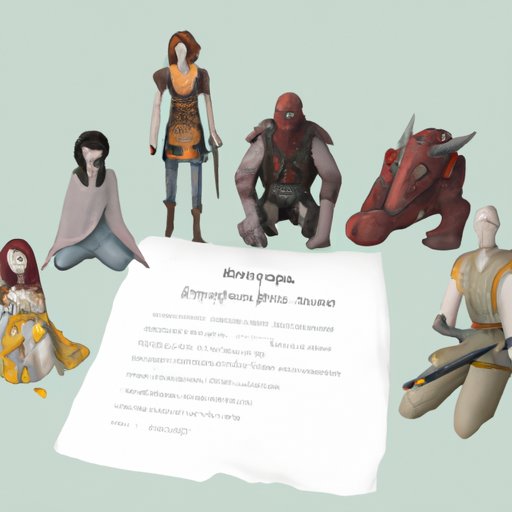Introduction
Dungeons and Dragons (D&D) is a roleplaying game that has been around for decades. It is a fantasy game where players create a character, explore a world of their own making, and battle monsters and other creatures. As the Dungeon Master (DM), you are responsible for creating and running the game. It is your job to create an immersive story and guide the players along their journey.
Research D&D Rules and Best Practices
Before you can start running a game, it is important to familiarize yourself with the rulebooks. Every edition of D&D has its own rulebook, so make sure you have the most up-to-date version. You will also want to read up on best practices for running a game. There are many resources available online, such as forums and blogs, to help you become a better DM. Joining a community of DMs can also be helpful as you can get advice from experienced players.

Develop a Storyline for Your Campaign
Once you have a basic understanding of the rules, you can begin to develop a storyline for your campaign. Start by brainstorming ideas for your story. Consider creating interesting plot twists or introducing unexpected elements to keep your players engaged. Decide on a setting for your game, such as a city, a kingdom, or a dungeon.
Create Interesting Non-Player Characters (NPCs)
NPCs are characters that exist within the game world but are not controlled by any of the players. They can provide information, serve as allies or enemies, and help to move the story forward. When creating NPCs, give them unique personalities and provide them with goals and motivations. This will help to make them feel more real to the players.
Learn How to Build Encounters
Encounter building is an important part of being a DM. Encounters are battles between the players and enemies or obstacles. It is important to understand the different types of encounters, such as combat and social encounters. You will also need to consider the challenge level of each encounter to ensure that it is balanced for your players.
Utilize Maps, Miniatures, and Props in Your Sessions
Using visual aids such as maps, miniatures, and props can help to bring your game to life. Having a map of the area that the players are exploring can help to give them a better understanding of their surroundings. Using miniatures and props can also help to make the game more immersive. Incorporating physical objects into your session can add an extra layer of excitement.
Conclusion
Being a DM in Dungeons and Dragons can be a rewarding experience. With the right preparation, you can create a fun and engaging game for your players. Make sure to do your research and become familiar with the rules. Develop a compelling storyline and create interesting NPCs. Learn how to build encounters and utilize maps, miniatures, and props to enhance your sessions.
(Note: Is this article not meeting your expectations? Do you have knowledge or insights to share? Unlock new opportunities and expand your reach by joining our authors team. Click Registration to join us and share your expertise with our readers.)
